Sea snakes aren’t just any snake that happens to swim. In modern herpetology, the term refers to two lineages within the cobra family (Elapidae): true sea snakes (Hydrophiinae) and sea kraits (Laticaudinae). Both have oar-like tails and superb aquatic agility, yet they live very different lives at the ocean’s edge.
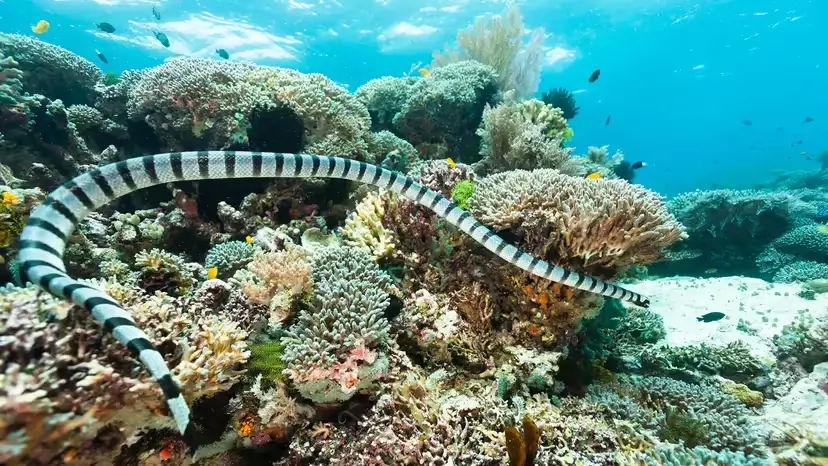
True sea snakes are fully marine. They give birth at sea, keep to salt water their entire lives, and—because they’ve lost the broad belly scales land snakes use for traction—are nearly helpless on beaches. Some bays in tropical Australia even act as natural nurseries where pregnant females gather and deliver their young.
Sea kraits split their time. They hunt underwater but return to land to rest, digest large meals, shed, and lay eggs. Retaining functional belly scales lets them crawl competently on shore, which gives them different options for hydration, shelter, and reproduction.
Sea snake venoms are powerful neurotoxins—often stronger, drop for drop, than many terrestrial vipers. Yet serious incidents with people are uncommon. Most species are wary and deliver dry bites when cornered, conserving venom for prey. When envenomation does occur, symptoms can include flaccid paralysis and respiratory compromise, so rapid medical care and assisted breathing can be lifesaving where antivenoms are unavailable or limited.
Simple rule: admire at a distance, do not handle, and avoid trapping or netting them.
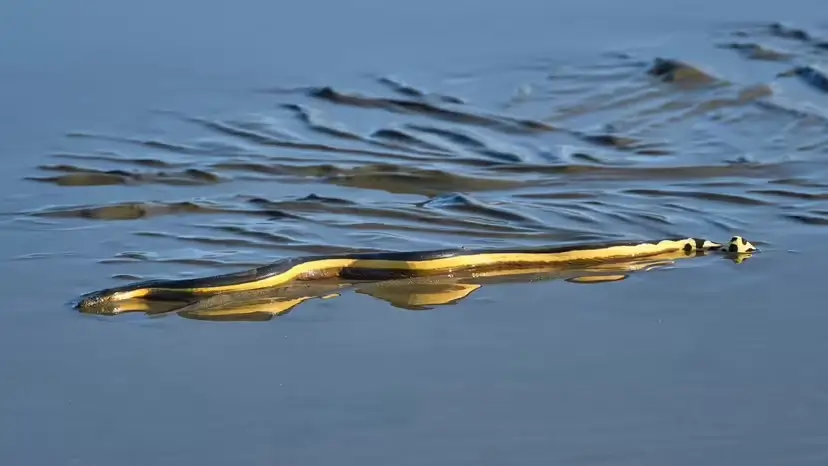
Different species solve the “ocean pantry” in different ways. Some, like the yellow-bellied sea snake, drift at the surface like floating debris; small fish shelter beneath the coils and are snapped up. Reef hunters probe crevices and holes for blennies, gobies, and especially eels—sea kraits are famed eel specialists and subdue them quickly with fast-acting venom. A few lineages evolved even further: fish-egg specialists with tiny fangs and relatively weak venom because their food doesn’t swim away.
Sea snakes cannot drink seawater. They meet their freshwater needs with clever strategies. Sea kraits lick dew and rain from coastal vegetation and puddles on land. Fully marine species exploit rain lenses—brief, millimeters-thin layers of fresh water that form on the ocean surface right after squalls. They surface to sip before mixing erases the lens.
Both groups have valved nostrils that seal underwater and can remain submerged for extended periods. A remarkable twist in some true sea snakes: dense blood vessels in the head skin aid aquatic oxygen uptake, marginally extending dives.
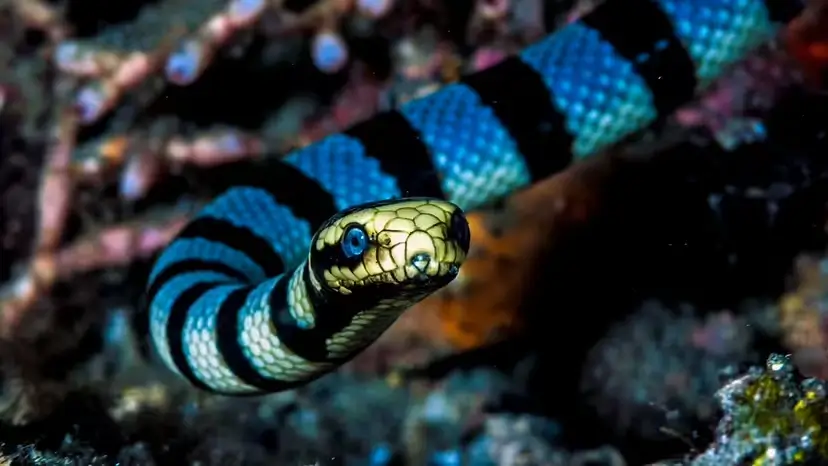
Sea snakes radiated across the Indo-Pacific tropics and even colonized a few saline lakes. You won’t find natural populations in the Atlantic. Historical geography and climate likely blocked them: the closing of the Panama seaway, cold southern passages, and arid, low-rainfall coasts that offer little fresh water for hydration.
Snakes shed by rubbing against rough surfaces. In open water that’s tricky, so sea snakes use reef rock, wrecks, algae, and tight passages to scrape off the old skin. It’s not just cosmetic; sloughing helps remove parasites, smooth hydrodynamics, and keep the skin functioning properly.
Sharks, saltwater crocodiles, and raptors take sea snakes when they can. Some species fight confusion with false head patterns near the tail tip, deterring strikes or buying time to flee. The ocean’s best impersonator—the mimic octopus—even copies the bold banding of sea kraits, discouraging predators that have learned to avoid the real thing.
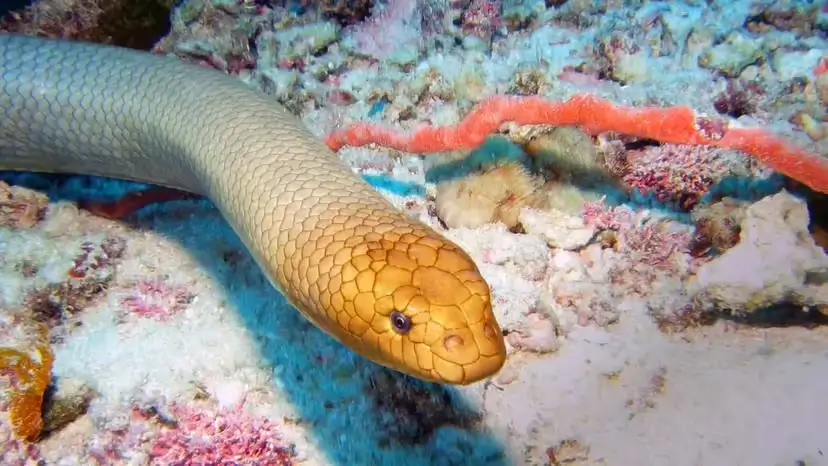
If you dive or snorkel where sea snakes live, the safest interaction is no interaction. Give them room, never block an exit route, and avoid flash-close photography or touch. If a snake is accidentally netted, release is safest using wet hands or a damp cloth, protective gloves, and minimal restraint. In the rare event of a bite, immobilize the limb, keep movement low, and seek urgent care. Do not cut, suction, ice, or apply electric shocks.
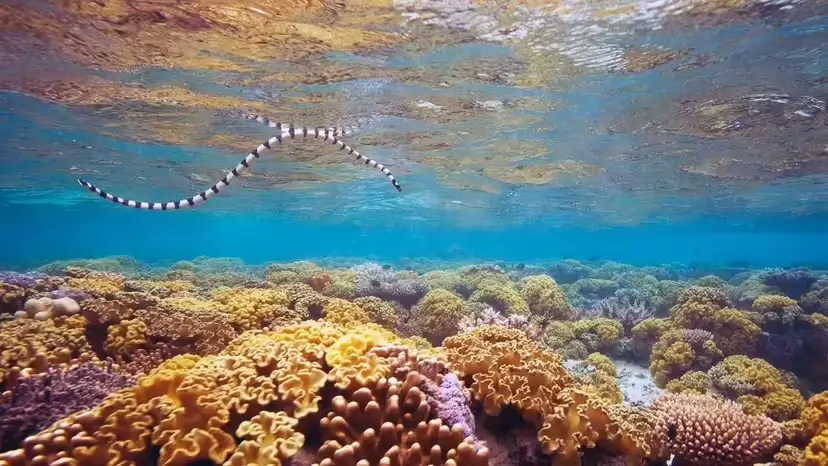
Sea snakes are more than a headline about potent venom. They regulate small fish and eel populations, support reef balance, and act as sensitive indicators of nearshore pollution and habitat decline. Their biggest threats are bycatch, coastal contamination, and the loss of healthy seagrass and coral systems. Respecting their space and protecting their habitats safeguards both people and reefs.
animal tags: sea snake
We created this article in conjunction with AI technology, then made sure it was fact-checked and edited by a Animals Top editor.